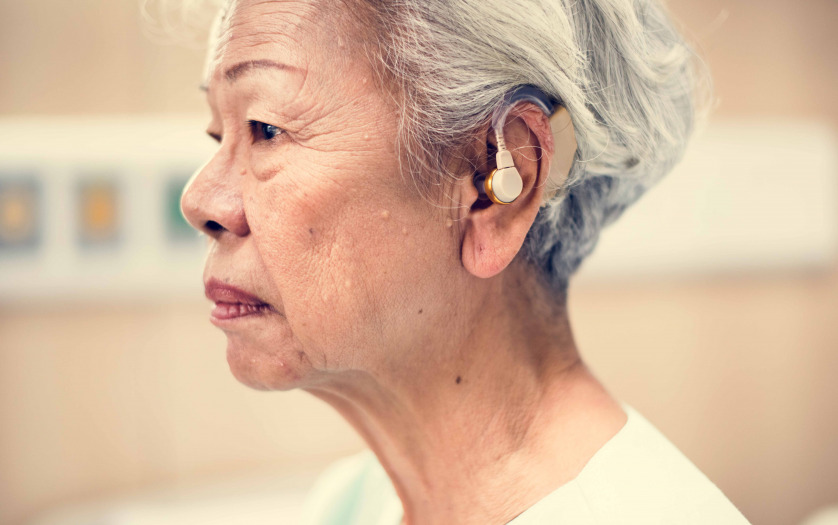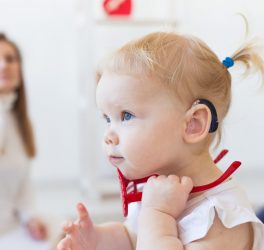
Countries with the highest reported levels of hearing loss also have the lowest reported use of hearing aids, finds international research published in the open access journal BMJ Global Health.
And men are generally more likely than women to report difficulties with their hearing, although this gender divide narrows with age, the findings show.
An estimated 1.57 billion people—equivalent to 1 in 5 of the world’s population—had hearing loss in 2019. And it’s predicted that it will affect 2.45 billion people by 2050, say the researchers.
Hearing loss is associated with an array of problems in adults. These include depression, loneliness, social isolation, falls and fall-related injuries, postoperative complications, cardiovascular disease, cognitive decline and even death, they point out.
But current accurate measurements of hearing loss are limited by a lack of audiology service provision and the expense of collecting hearing test data, they point out.
To strengthen the evidence base, they analysed self-reported hearing loss and hearing aid use from 8 nationally representative long term studies, representing 28 countries for the period 2001–2021.
These studies were: the Brazilian Longitudinal Study of Ageing (ELSI-Brazil, 2016–20); the China Health and Retirement Longitudinal Study (CHARLS, 2011–18); the Costa Rican Longevity and Healthy Ageing Study (CRELES, 2005–09); the Mexican Health and Ageing Study (MHAS, 2001–21); the South African National Income Dynamics Study (NIDS, 2008–17); the Korean Longitudinal Study of Ageing (KLoSA, 2006–20); the Health and Retirement Study from the USA (HRS, 2002–20); and the Survey of Health, Ageing and Retirement in Europe (SHARE, 2004–15).
Each study collected extensive data on the demographic, socioeconomic, behavioural and health characteristics of their adult participants, most of whom were in their 60s.
Hearing ability was derived from participants reporting whether they used a hearing aid, and how they rated their own hearing, from excellent to poor. The researchers combined these responses to define hearing loss if respondents reported fair or poor hearing, or hearing aid use.
The prevalence of hearing loss varied widely, with the highest reported prevalence in China (65%), and the lowest in South Africa (16.5%).
The four countries with the greatest reported prevalence of hearing loss—China, South Korea, Mexico, and Brazil—also had the lowest levels of hearing aid use, ranging from 1% of those with reported hearing loss in China to 6% in Brazil.
At the other end of the scale, adults with hearing loss in Northern Europe, the USA, and Western Europe were most likely to report using a hearing aid, ranging from 24% in Western Europe to 39% in Northern Europe.
The responses show that the likelihood of hearing loss increased with age in all countries.
Hearing loss at the oldest ages was reported least in Costa Rica and South Africa, where prevalence barely rose above 40% at ages 85+. But over 50% of 50-54 year-olds in China reported hearing loss, with 80% doing so at the oldest ages.
With the exceptions of China, South Korea, and South Africa, men were significantly more likely than women to report hearing loss at nearly all ages.
But there were international differences in hearing aid use by age and gender. In the regions with the highest use—Northern Europe, USA, Western Europe—this increased linearly in tandem with age.
In Northern Europe, for example, around 13% of 50-54 year old men with hearing loss wore hearing aids, compared with 74% at ages 85+. Use also rose in tandem with increasing age in other parts of Europe, Brazil, and South Korea, although overall levels were low, even at the oldest ages.
In South Africa, the age pattern was reversed. Both older men and older women were less likely to report hearing aid use than their younger counterparts.
Gender differences in hearing loss were greatest in the USA, where men were 1.6 times more likely to report this than women. Men in South Africa, China, and South Korea were also 1.5 times more likely to report wearing a hearing aid, although overall use in China and South Korea was extremely low.
Women in Brazil were more likely than men to wear hearing aids, while gender differences were small or non-existent in Northern and Southern Europe, Costa Rica, Mexico and Western Europe.
In regions with the largest gender differences, men below the age of 70 were up to twice as likely to report hearing loss as women, but this divide narrowed with age. On the other hand, there were little to no gender differences in hearing loss at any age in China, South Africa, and South Korea.
In areas with high hearing aid use (Northern Europe, USA, Western Europe and Israel), younger women were more likely to wear them than younger men. In mid-use regions (Costa Rica, Central and Eastern Europe and Southern Europe), gender differences were inconsistent across age categories.
And although use was low or practically non-existent in South Africa, South Korea, and China, men of nearly all ages in these countries were consistently and significantly more likely to wear them than women.
The researchers acknowledge various limitations to their findings, including the reliance on self-reported measures of hearing loss and hearing aid use rather than objective measurements. And while the study encompassed a diverse number of countries, it was limited to those classified as upper-middle to high-income.
Nevertheless, they suggest that: “the wide range in self-reported hearing loss, from 17% in South Africa to 65% in China, suggests complex interactions between a country’s structural factors, like medical and educational systems, and a host of socio-cultural elements, such as beliefs around stigma, disability, and gender norms.”
They add: “The role of structural systems may be especially pertinent for [low and middle income countries], whose health systems are still developing and where specialty services, such as audiology, have only been recently established.”
But pinpointing the correlation between access and uptake at the international level is complicated, they point out.
“Even in countries with complete or near-complete insurance coverage (eg, Western Europe, Northern Europe), hearing aid uptake remains well below 100%, suggesting that financial access can only tell some of the story,” they write.








